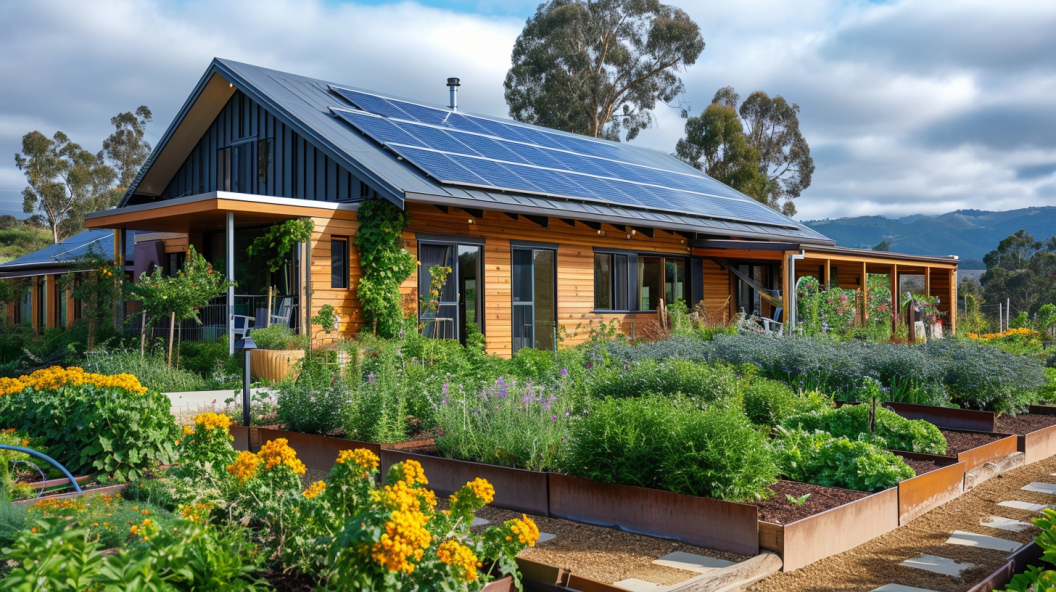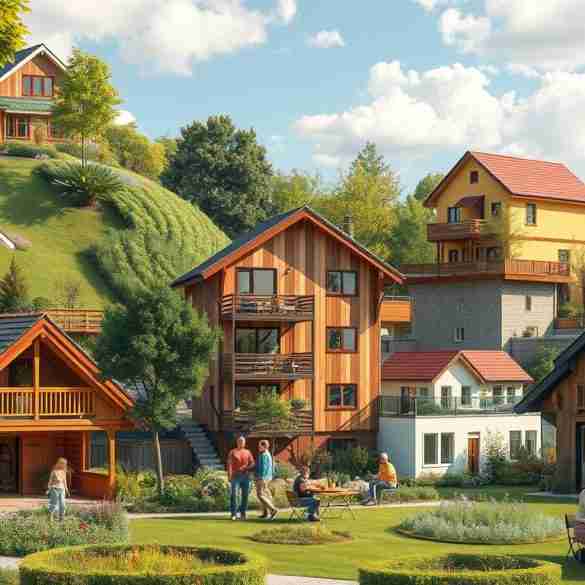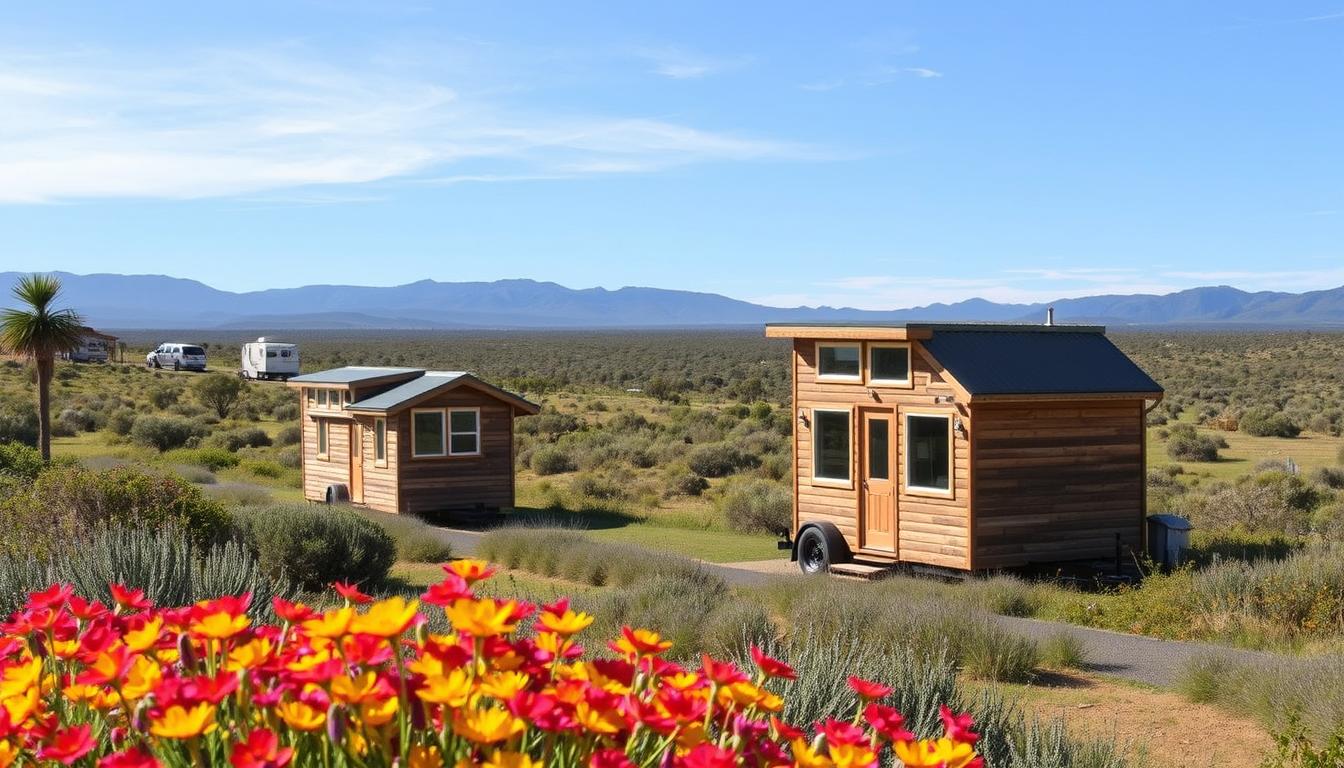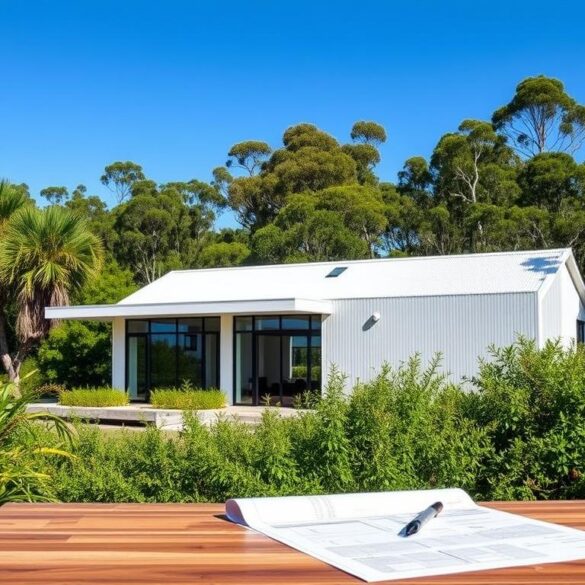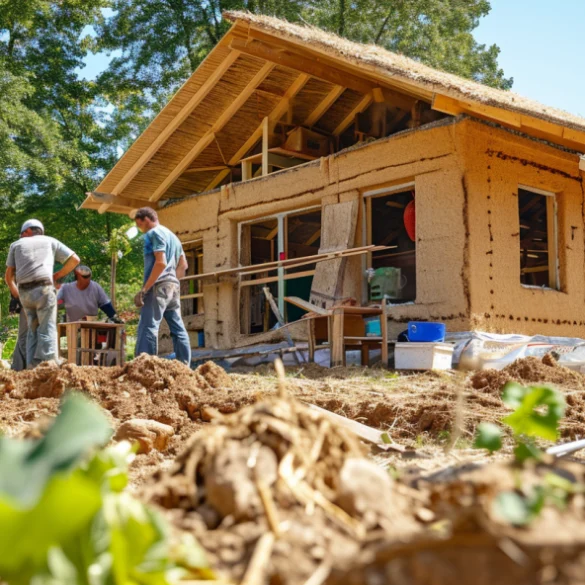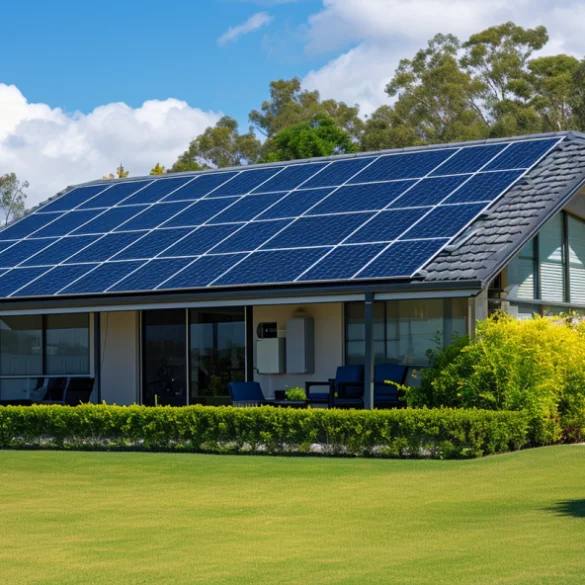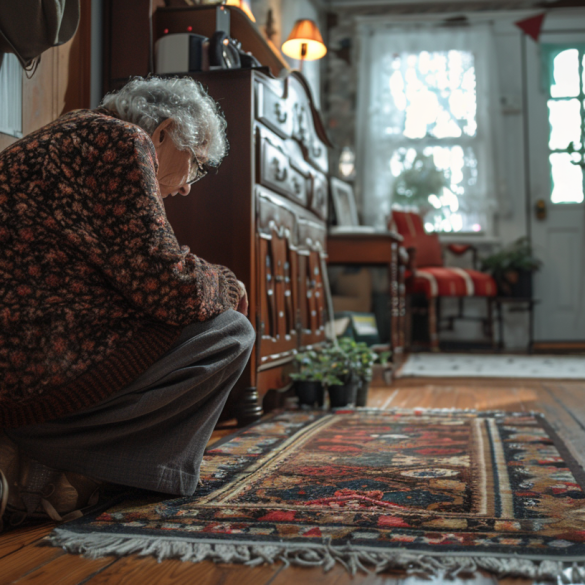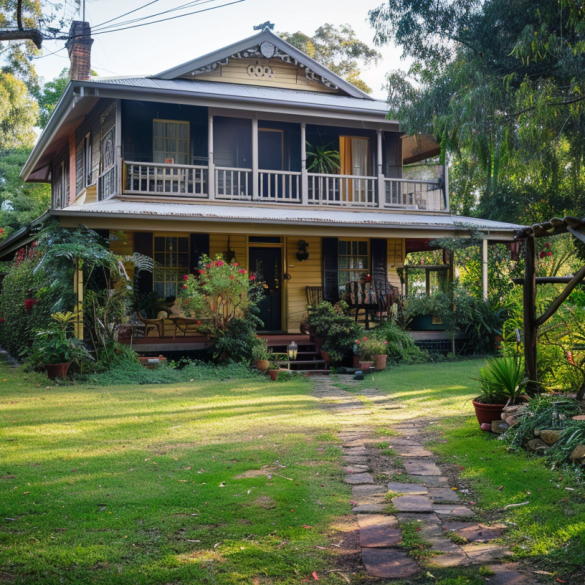Sustainable homes are the future of environmentally friendly green living. By adopting various sustainable practices, technologies, and principles, you can design and build an eco-friendly home that is good for both the environment and your wallet long-term while also promoting the healthiest living standards.
What is a Sustainable Home?
A Sustainable home is first and foremost a home that you can afford to live in. This includes the Purchase or Build cost and the cost to continue to use the home in a way that complements the health of people within the house.
Also, a sustainable home aims to have a minimal environmental impact by efficiently using resources like energy and water while reducing waste and pollution through careful home design, construction, and living choices. Beyond adopting eco-friendly building materials and development strategies, sustainable home projects also ensure energy-efficient operation, integration of renewable energy systems, responsible waste disposal, indoor air purity, and conservation of natural environmental features surrounding the home.
Van Jones once said, “A sustainable home isn’t just about bricks and mortar; it’s about living in harmony with our planet.” This quote perfectly captures the ethos behind the sustainable home movement that is focused on building eco-friendly houses to mitigate climate change while creating comfortable and healthy living environments.
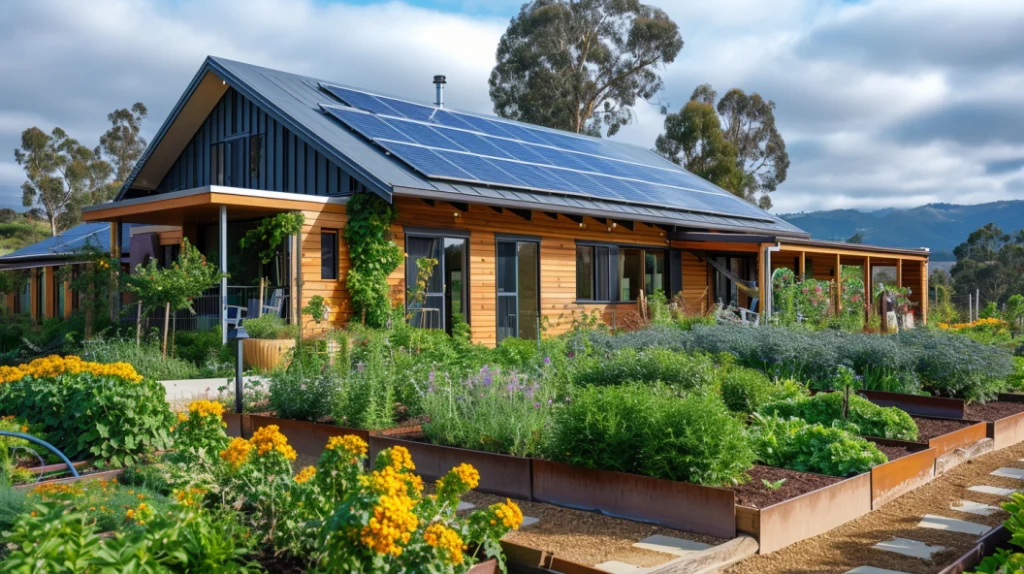
Would you rather listen to a podcast about this story.
Key Benefits of Sustainable Homes
There are many excellent reasons to make your home more sustainable, including:
1. Lower Environmental Impact
By significantly reducing reliance on fossil fuels and excessive water usage while integrating renewable energy sources, sustainable homes minimize greenhouse gas emissions that drive climate change, resource depletion, and habitat destruction.
2. Reduced Energy Costs
Proper insulation, energy-efficient appliances, strategic architectural designs that utilize passive solar heat, and integration of solar panels slash electricity and heating fuel expenses for sustainable homes.
3. Enhanced Durability
Sustainable home builders thoughtfully source quality construction materials from local, trusted vendors to ensure exceptional durability and longevity, eliminating frequent repairs or renovations.
4. Improved Health and Comfort
Careful material selection and proper ventilation ensure excellent indoor air quality while smart home devices allow customized comfort and lighting settings for enhanced wellbeing.
5. Water Conservation
Advanced plumbing fixtures, greywater recycling, and rainwater harvesting systems greatly reduce municipal water usage while drought-resistant native plants keep lawns lush.
As Amory Lovins stated, “The future of the planet rests on our ability to create homes that are not just energy-efficient, but life-affirming.” Sustainable homes are the path forward to ecological stability and human flourishing.
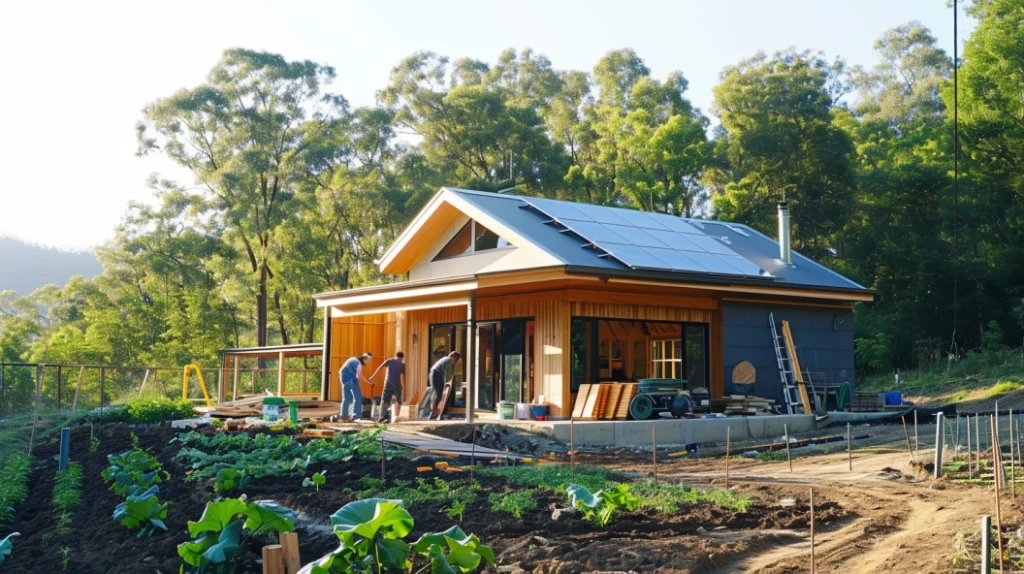
Key Features of Sustainable Home Design
Constructing an environmentally friendly home requires careful consideration starting from the initial planning and design stages. Here are some of the most crucial elements to integrate for optimal sustainability:
Site Selection
Choosing a properly oriented site with access to existing infrastructure facilitates the integration of renewable energy systems and sustainable construction materials with a smaller environmental footprint.
Architectural Design
Passive solar design strategies, aligned window placement for natural lighting and ventilation, strategic landscaping features, smaller square footage, and optimal insulation must be incorporated into architectural plans.
High-Efficiency Systems and Fixtures
ENERGY STAR-certified smart appliances, LED lighting, advanced thermostats, low-flow plumbing fixtures, and electric vehicle charging stations drastically cut energy and water waste while enabling smart home automation.
Sustainable Materials
Locally sourced recycled building materials, non-toxic paints/adhesives, organic fabrics, renewable insulation, FSC certified wood, and durable finishes ensure indoor air purity and exceptional construction quality.
On-Site Renewable Energy
Solar panels, geothermal heating/cooling systems, and wind turbines generate abundant emissions-free electricity, heat, and hot water to meet or even surpass the sustainable home’s energy needs.
Water Conservation Systems
Rainwater harvesting barrels, permeable pavements, drought-resistant native landscaping, greywater recycling, and other features conserve water usage while keeping the home comfortably lush.
By starting from the foundation with intentional sustainable design choices, you can ensure your home performs exceptionally for decades while minimizing environmental harm.
Constructing an Eco-Friendly Sustainable Home
Building a sustainable home requires careful attention to detail during construction to uphold green standards. Follow these best practices during the building phase:
Sustainable Site Management
- Minimize soil disruption and erosion
- Prevent vegetation and tree removal whenever possible
- Install erosion control barriers to protect local ecosystems
Responsible for Material Transport and Handling
- Source local construction materials to reduce emissions
- Organize efficient delivery schedules
- Correctly store and handle materials to reduce damage or waste
Manage Waste and Toxins Responsibly
- Set up proper hazardous waste disposal pathways
- Install recycling bins for the crew
- Ensure appropriate materials like lead paint or asbestos are safely removed and disposed of
Perform Quality Assurance Checks
- Confirm correct materials and building standards are followed
- Validate energy efficiency metrics through system testing
- Audit sustainable features functionality frequently
By upholding green construction standards from start to finish, your sustainable home will achieve outstanding energy efficiency, quality, and environmental performance for decades to come. Be sure to utilize reputable green building professionals during the process.
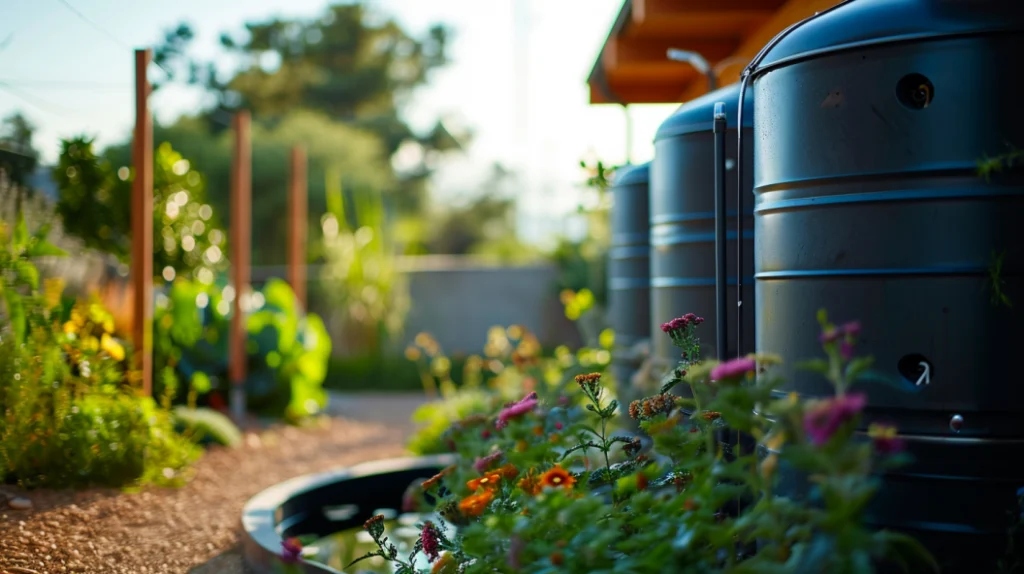
Implementing Water Conservation Features
As climate change accelerates droughts worldwide, sustainable homes must minimize water usage wherever possible through intelligent plumbing fixture selection and purposeful landscaping decisions:
Water-Efficient Plumbing Fixtures
Installing WaterSense-labeled low-flow toilets, faucets, and showerheads saves thousands of gallons annually without compromising water pressure.
Greywater Recycling
Greywater recycling systems capture gently used water from sinks, showers, and washing machines to reuse for flushing toilets or irrigating lawns.
Rainwater Harvesting
Collecting rain runoff in cisterns or rain barrels provides a free sustainable source for irrigation rather than using drinkable tap water.
Sustainable Landscaping
Choosing native plants suited to the climate and rainfall patterns surrounding the home cuts back on irrigation requirements. Consider rain gardens, bioswales, permeable pavements, mulch layers, and compost to foster water retention.
These straightforward water conservation tweaks make sustainable living effortless while slashing utility bills.
Benefits of High-Efficiency HVAC Systems
Heating and cooling accounts for a massive chunk of home energy usage. Therefore, investing in an efficient, green HVAC system is crucial for sustainable homes striving towards net-zero energy status. Benefits include:
1. Lower Energy Consumption
Advanced heat pumps, geothermal units, and solar thermal systems use 25-50% less power than conventional options.
2. Reduced Maintenance
Top-tier components last over 20 years with minimal servicing or repairs required.
3. Healthier Indoor Air
Integrated air filtration systems with MERV-13+ ratings capture allergens and pollution for cleaner air.
4. Zoned Comfort Control
Smart thermostats, in-floor radiant heating, and multiple HVAC units allow custom comfort settings for different zones.
5. Higher Property Valuations
Home buyers are willing to pay premium prices for sustainable HVAC systems that offer long-term savings.
While the upfront price tag of high-efficiency HVAC may seem intimidating, the outstanding energy savings and minimal maintenance make them well worthwhile investments in nearly all cases.
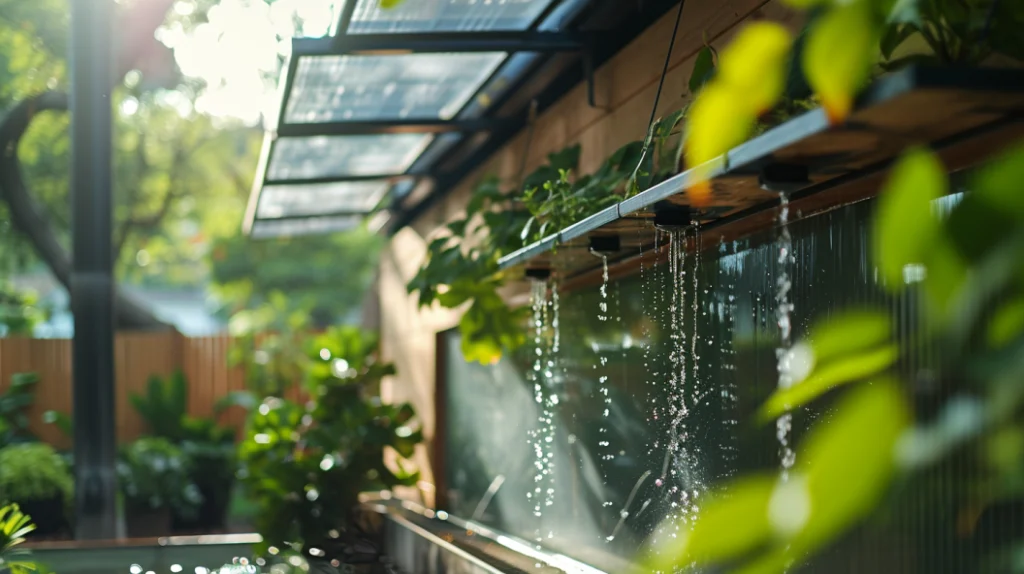
Implementing Smart Home Technology
Integrating smart home devices allows sustainable households to easily analyze resource consumption, automate lighting/temperatures, and control appliances remotely. Benefits include:
Energy Savings
Smart thermostats intelligently warm/cool homes right before occupants awaken or return while reducing temperatures when nobody is home. Smart plugs also automate the shutdown of standby vampire loads.
Water Conservation
Leak detection sensors immediately shut off water and send alerts when they detect abnormal continuous flows to prevent flooding damage and waste.
Air Quality Enhancements
Smart sensors track humidity, temperature fluctuations, VOCs, and other indoor air quality metrics, automatically triggering remediation systems like fans or air filters when thresholds are exceeded.
Remote Access Convenience
Monitoring energy usage patterns, adjusting lighting scenes, and controlling smart appliances is achievable from anywhere utilizing user-friendly phone apps.
Home Security
Integrated smart cameras, motion sensors, and door locks enable 24/7 secure home surveillance with instant notifications of suspicious activity.
Advancing IoT home devices deliver convenience while easing the burden of sustainable living. With smart tech support, green homes practically run themselves!

Financial Incentives for Building Sustainable Homes
While sustainable construction materials, systems, and verifications like LEED certification may cost more upfront, various financial incentives help offset these expenses through tax deductions, rebates, and sale price premiums:
Federal Solar Tax Credits offer a 26% tax credit in 2023 for installing solar arrays, geothermal heat pumps, solar water heaters, and small wind turbines.
State/Local Utility Rebate Programs provide upfront discounts on purchasing ENERGY STAR appliances, upgrading to high-efficiency HVAC systems, properly insulating/sealing, or planting low-water landscaping.
Priority Processing Benefits reward green-certified homes with expedited permitting, planning applications, and approval processes.
Higher Resale Value exists for sustainable properties thanks to buyer demand. On average, green homes sell for 4-10% above the market value of comparable properties.
Lower Insurance Premiums may be offered by some providers in return for proof of durability measures like storm-resistant windows or fire-resistant roofing.
Property Tax Exemptions are accessible in certain districts for LEED/ENERGY STAR/Passive House verified homes or renewable energy system installations.
With the right local or federal sustainable housing incentives, you can offset any added expenses incurred when pursuing green construction or upgrading efforts.
Challenges Facing Sustainable Homebuilding
Constructing an environmentally friendly home has become much more feasible thanks to technological advancements, raised awareness, and financial incentives. However, some challenges remain, including:
Higher Upfront Costs
Eco-friendly building materials, renewable energy systems, EV chargers, and high-efficiency appliances often demand premium prices, deterring many homeowners despite long-term savings potential.
Insufficient Local Options
Sourcing green materials regionally or finding qualified sustainable architects and contractors can prove difficult in certain areas until market demand expands.
Lack of Supportive Infrastructure
The absence of municipal composting, recycling facilities, renewable energy equipment vendors, or prevalent public transit hampers sustainability pursuits.
Minimal Knowledge and False Perceptions
Myths that sustainable homes are uncomfortable, unattractive, and only for wealthy individuals continue circulating due to unfamiliarity with modern green building capabilities.
Through governmental initiatives, technological evolution, environmental education, and economic incentives, sustainable home construction obstacles should gradually abate over the next decade.

Sustainable Products and Materials for Homebuilding
Employing environmentally friendly products and construction materials makes a profound impact when building or renovating homes to meet sustainability targets:
Recycled, Locally-Sourced Materials
Using locally available recycled bricks, metals, and plastics for construction minimizes transport emissions while reusing waste.
Rapidly Renewable Materials
Bamboo, cork, straw bale, and wool serve as abundant, biodegradable insulation and finishing alternatives to slower-growing woods.
Non-toxic, Low-VOC Adhesives/Paints
Specialized low-VOC or VOC-free paints, stains, and adhesives prevent indoor air contamination.
Responsibly Harvested Lumber
Verifying FSC Certification confirms that sourced lumber comes from responsibly managed forests rather than clear-cut lands.
Durable, Quality Finishes
Opting for resilient finishes and surfaces made from recycled glass, metal, or long-lasting wood prevents frequent renovations and repainting.
Remember to vet all material and brand sustainability claims thoroughly before purchasing to cut greenwashing risk. When possible, request transparent third-party certifications like Cradle to Cradle rather than relying solely on internal corporate promises.
Future Outlook for Sustainable Homes
The sustainable home market displays extremely promising growth as climate change concerns and green technology both continue advancing exponentially.
Research from Emergen Research predicts that from 2022 to 2030, the global green building market will expand at a compound annual growth rate of 27.2%, equating to a $12.6 billion industry by 2030. This enormous projected expansion reflects surging consumer demand as sustainable homes become more financially accessible and desirable thanks to striking designs and tangible benefits.
National governments are also finally awakening to the immense potential of sustainable housing through practical initiatives like the United States’ Inflation Reduction Act which offers upfront discounts and clean energy tax credits for heat pumps, updated insulation, electrical wiring, and Energy Star appliances. Over $4.5 billion has been set aside solely for affordable sustainable housing initiatives benefiting low-income groups, seniors, and disabled individuals, illustrating equitable sustainable development’s prioritization.
Undeniably, sustainable homes fostering energy independence and environmental stability are the future of the global construction industry. Eventually, we may progress to a point where all new builds automatically integrate enough efficiency measures, renewables, and recycled materials to achieve LEED Platinum or Passive House benchmarks by default.
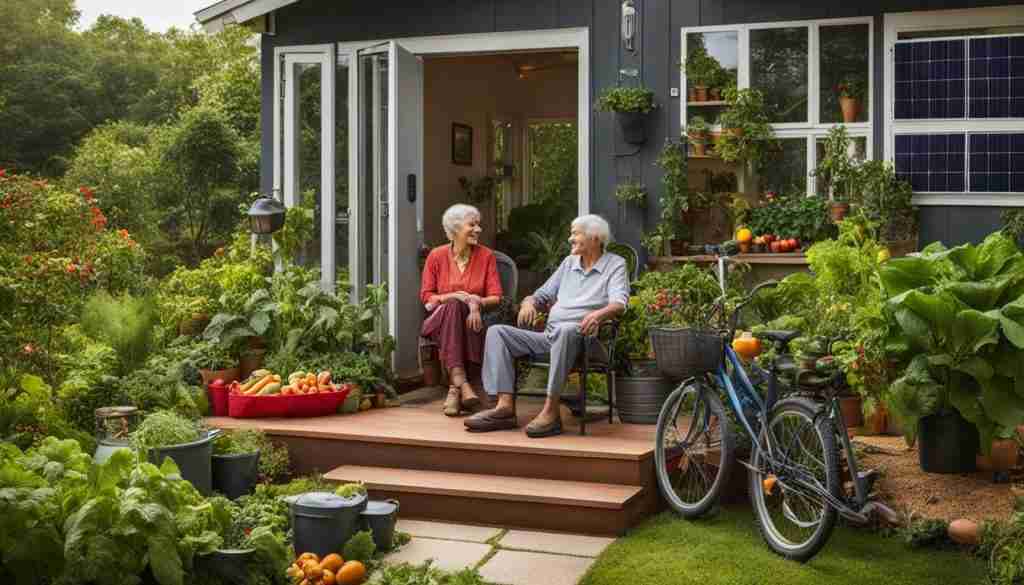
Start Your Sustainable Home Journey
Constructing an eco-friendly, resilient home may appear intimidating initially but can be seamlessly achievable by beginning small with attainable upgrades over time.
As green home specialist Rob Greenfield encourages, “A sustainable home doesn’t have to be perfect, but every effort counts. Start small, learn, and grow with your home.”
Follow this step-by-step roadmap to enhance your household’s sustainability steadily:
1. Perform an Energy Audit
Inspect current efficiency levels and identify the most impactful areas needing improvement.
**2. Upgrade Lighting **
Swap all bulbs for LEDs and install smart lighting controls.
3. Improve Insulation
Boost attic insulation to R-60+ levels and plug air leaks across the home.
4. Install Smart Thermostats
Programmable smart thermostats fine-tune heating and cooling to conserve energy.
5. Upgrade Old Appliances
Replace aging refrigerators, dishwashers, and laundry machines with ENERGY STAR models.
6. Implement Water Conservation Measures
Install low-flow showerheads, faucets, toilets, and native drought-resistant plants outside.
7. Integrate Renewable Energy Sources
Solar panels and solar water heating systems generate sustainable electricity.
8. Pursue Green Certifications
Attain LEED, Energy Star or Passive House verification to confirm sustainability.
Refer to the earlier sections of this guide for more details on efficiently executing these home upgrades. Small daily improvements ultimately compound into momentous positive environmental change.
A sustainable future depends on responsible citizens uniting behind a shared vision for green development while supporting governmental climate change mitigation efforts. Construct your piece of this vibrant future through a thoughtfully crafted sustainable home suited for comfortable living within our planetary boundaries.

